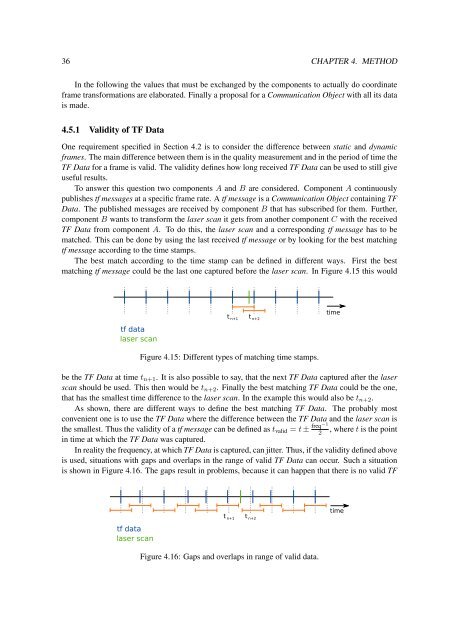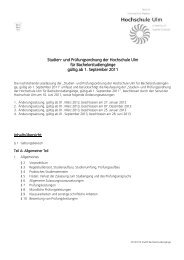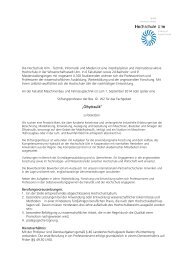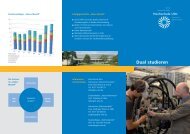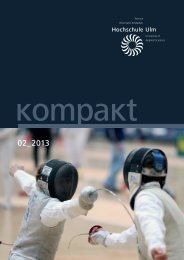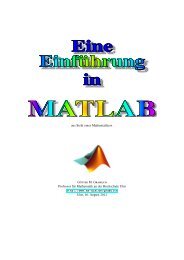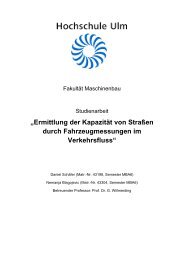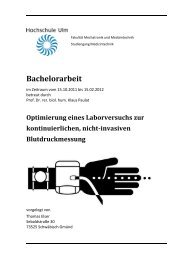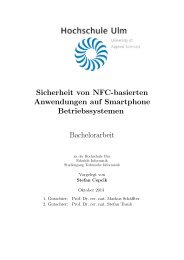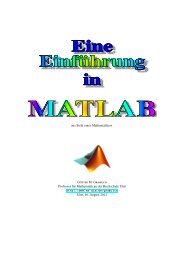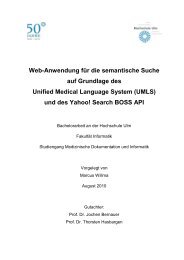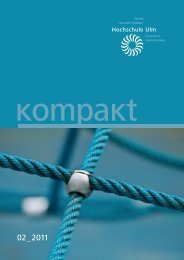PDF 1.938kB
PDF 1.938kB
PDF 1.938kB
Create successful ePaper yourself
Turn your PDF publications into a flip-book with our unique Google optimized e-Paper software.
36 CHAPTER 4. METHOD<br />
In the following the values that must be exchanged by the components to actually do coordinate<br />
frame transformations are elaborated. Finally a proposal for a Communication Object with all its data<br />
is made.<br />
4.5.1 Validity of TF Data<br />
One requirement specified in Section 4.2 is to consider the difference between static and dynamic<br />
frames. The main difference between them is in the quality measurement and in the period of time the<br />
TF Data for a frame is valid. The validity defines how long received TF Data can be used to still give<br />
useful results.<br />
To answer this question two components A and B are considered. Component A continuously<br />
publishes tf messages at a specific frame rate. A tf message is a Communication Object containing TF<br />
Data. The published messages are received by component B that has subscribed for them. Further,<br />
component B wants to transform the laser scan it gets from another component C with the received<br />
TF Data from component A. To do this, the laser scan and a corresponding tf message has to be<br />
matched. This can be done by using the last received tf message or by looking for the best matching<br />
tf message according to the time stamps.<br />
The best match according to the time stamp can be defined in different ways. First the best<br />
matching tf message could be the last one captured before the laser scan. In Figure 4.15 this would<br />
t n+1<br />
t n+2<br />
time<br />
tf data<br />
laser scan<br />
Figure 4.15: Different types of matching time stamps.<br />
be the TF Data at time t n+1 . It is also possible to say, that the next TF Data captured after the laser<br />
scan should be used. This then would be t n+2 . Finally the best matching TF Data could be the one,<br />
that has the smallest time difference to the laser scan. In the example this would also be t n+2 .<br />
As shown, there are different ways to define the best matching TF Data. The probably most<br />
convenient one is to use the TF Data where the difference between the TF Data and the laser scan is<br />
the smallest. Thus the validity of a tf message can be defined as t valid = t ± freq−1<br />
2<br />
, where t is the point<br />
in time at which the TF Data was captured.<br />
In reality the frequency, at which TF Data is captured, can jitter. Thus, if the validity defined above<br />
is used, situations with gaps and overlaps in the range of valid TF Data can occur. Such a situation<br />
is shown in Figure 4.16. The gaps result in problems, because it can happen that there is no valid TF<br />
tf data<br />
laser scan<br />
t n+1<br />
t n+2<br />
time<br />
Figure 4.16: Gaps and overlaps in range of valid data.


